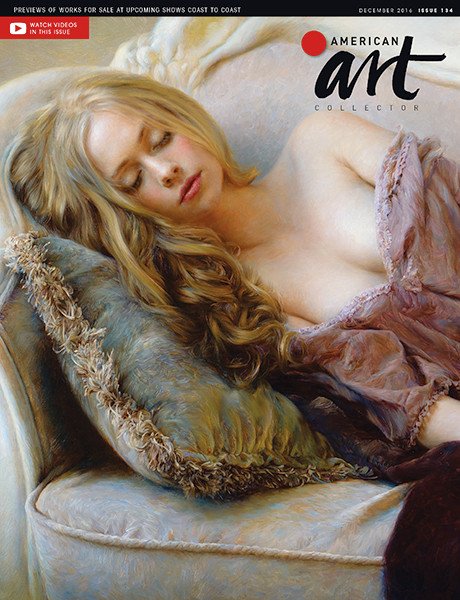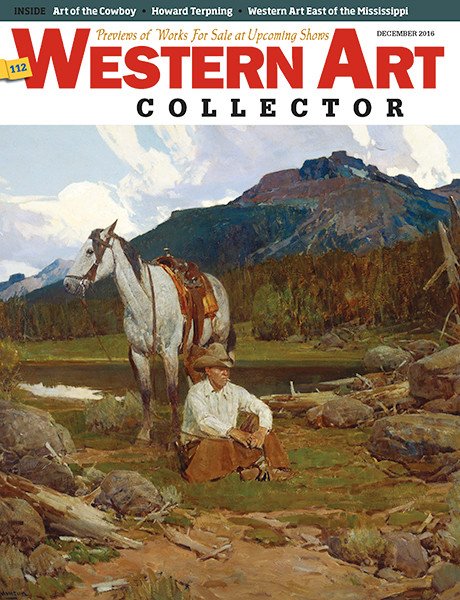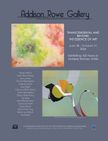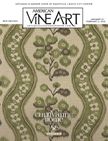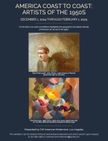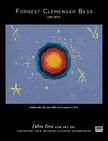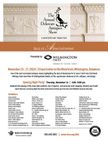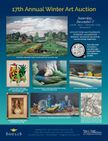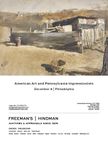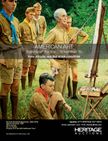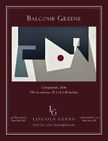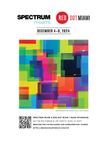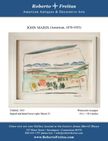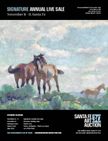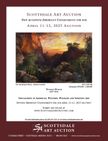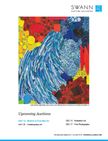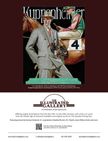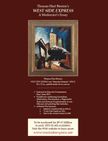Paris. From the turn of the 19th century to the 20th, through the tragedy of the First World War, through the “Lost Generation” between that war and the Second World War and the Nazi occupation of the “City of Light,” Paris was the cultural heart of the world, a haven and destination for artists, freethinkers and “free livers” of every stripe. And yet, the public imagination has, for the most part, been dominated by men—mostly white men—like Pablo Picasso and Salvador Dalí, like F. Scott Fitzgerald and, of course, Ernest Hemingway. Women—other than Gertrude Stein, whose salons fomented the broth of ideas that bubbled in Paris—were seen as ancillary to the art and anxieties of famous men. In this mythology, women are muses, helpmeets, models, lovers and sparring partners. In truth, as Brilliant Exiles: American Women in Paris, 1900–1939, now on view at the Smithsonian’s National Portrait Gallery shows, women of Paris from the early 20th century were on their own trajectory, challenging social and cultural norms and creating bodies of work whose contribution to the modernist project we are only now beginning to appreciate and understand.
 Edward Jean Steichen (1879-1973), In Exaltation of Flowers: Rose - Geranium (Katharine Rhoades), 1910-13. Tempera and golf leaf on canvas, 120 x 55 in. Art Bridges. EXH.BE.01.
Edward Jean Steichen (1879-1973), In Exaltation of Flowers: Rose - Geranium (Katharine Rhoades), 1910-13. Tempera and golf leaf on canvas, 120 x 55 in. Art Bridges. EXH.BE.01.
A look at a partial list of the portraits of women in the exhibition gives a sense of the role of women in the shaping of the Paris of the time: Sylvia Beach, Josephine Baker, Natalie Clifford Barney, Elsie de Wolfe, Isadora Duncan, Jessie Redmon Fauset, Zelda Fitzgerald, Janet Flanner, Peggy Guggenheim, Theresa Helburn, Edna St. Vincent Millay, Florence Mills, Anaïs Nin, Rose O’Neill, Gertrude Stein, Sarah Samuels Stein, Gertrude Vanderbilt Whitney, Anna May Wong. In this short list alone, you can pick out American women, European women, Black women, Asian women, LGBTQ women, writers, painters, actors, dancers, designers, patrons. Sometimes a single name from the list belongs in half a dozen of these categories.
 Paul Colin (1892-1985), Josephine Baker, 1927. Lithograph with pochoir coloring on paper, image: 167⁄16 x 107/8 in. National Portrait Gallery, Smithsonian Institution; bequest of Jean-Claude Baker. NPG.2016.48.
Paul Colin (1892-1985), Josephine Baker, 1927. Lithograph with pochoir coloring on paper, image: 167⁄16 x 107/8 in. National Portrait Gallery, Smithsonian Institution; bequest of Jean-Claude Baker. NPG.2016.48.
Remember, Paris became the cultural hub of the world because it was a refuge for exiles, that is, a refuge for people who saw themselves—or, more importantly, were seen and deemed—as “different,” “progressive,” “transgressive,” “rebellious” and even “revolutionary.” Paris tolerated and encouraged non-conformism, as it does to this day. Indeed, the cultural identity of the city, and one of the wellsprings of its tourist industry, is the idea that Paris is a place to experiment, a place to conceive new ideas and put them into practice. If you saw the opening ceremony of the recent Paris Olympics, you saw the Parisian, and, by extension, the French imagination in full swing.
Exiles find other exiles; ideas pile on ideas.
 Alice Pike Barney (1857-1931), Eva Palmer Sikelianos, 1911. Pastel on paper, 131⁄8 x 131⁄8 in. Smithsonian American Art Museum, Gift of Laura Dreyfus Barney and Natalie Clifford Barney in memory of their mother, Alice Pike Barney. 1951.14.85.
Alice Pike Barney (1857-1931), Eva Palmer Sikelianos, 1911. Pastel on paper, 131⁄8 x 131⁄8 in. Smithsonian American Art Museum, Gift of Laura Dreyfus Barney and Natalie Clifford Barney in memory of their mother, Alice Pike Barney. 1951.14.85.
Looking at the artworks in the exhibition, in particular at the portraits, a word rises into consciousness. The word: Countenance. Now I don’t generally like to define a word in an essay like this. It strikes a high school paper tone. Countenance, however, is an interesting word. An old word. On the face of it, it means, well, face. It’s not much used these days, though if you read Mary Shelley’s Frankenstein you will soon see that she almost never writes “face”—only “countenance.” I suspect this is because countenance connotes bearing and demeanor with just a hint of hauteur, the right sort of word for the hubristic Victor Frankenstein. But countenance is also a verb meaning “to allow for the possibility of.” And that’s what these countenances say, at least to me—that there are possibilities that we have to allow for, versions of the world we have to countenance: possible ways of thinking, possible ways of creating, possible ways of being in the world, ways that may not have occurred to us. The women in Brilliant Exiles, one might say, are “into it,” where “it” is their own thing: their own minds and bodies, their own thoughts and dreams, their own plans and their own, internal maps of the world, maps they are making as they go in order to remake the world.
 Natashia Troubetskoia, Anaïs Nin, ca. 1932. Oil on canvas, 76 x 43½ in. National Portrait Gallery, Smithsonian Institution, NPG.2003.3.
Natashia Troubetskoia, Anaïs Nin, ca. 1932. Oil on canvas, 76 x 43½ in. National Portrait Gallery, Smithsonian Institution, NPG.2003.3.
The countenances in these portraits are emblems of states of being like Confidence, Daring, Pride, Ice, Jubilance, Disdain, Bemusement, and Indifference—none of which, by the way, embraces the viewer. Each, in fact, regards the viewer as simultaneously superfluous—or even somewhat annoying.
Confidence. Katharine Rhoades, daughter of a wealthy Connecticut family, studied painting with Robert Henri and headed for Paris to complete her studies. She exhibited in the 1913 Armory Show and ran with Alfred Stieglitz. She exhibited, modeled for other artists, and helped found the Freer Gallery. Edward Steichen’s portrait of Rhoades, part of his triptych, In Exaltation of Flowers, reveals an artist who is supremely confident, a modernist Atalanta ignoring the apples that would cause her to lose her footrace with Hippomenes and slake the jealousy of Aphrodite.
Daring. Paul Colin’s lithograph of American-born Josephine Baker, the celebrated singer, dancer, actor, activist and member of the French Resistance during World War Two, shows the performer at her most daring, in the 1927 Folies Bergère revue, when she wore only a skirt of artificial bananas onstage. Colin’s image captures Baker’s sensational, transgressive energy. She is long, lithe and, crucially, turned away from the viewer, absorbed in her own performance, daring you to look, daring you to look away, but not much caring whether you do either.
 Alfred Courmes (1898-1993), Peggy Guggenheim, 1926. Oil on canvas, 393⁄8 x 2513⁄16 in. Musée franco-américain du château de Blérancourt, EXH.BE.68.
Alfred Courmes (1898-1993), Peggy Guggenheim, 1926. Oil on canvas, 393⁄8 x 2513⁄16 in. Musée franco-américain du château de Blérancourt, EXH.BE.68.
Pride. At first, Alice Pike Barney’s 1911 pastel of Eva Palmer Sikelianos hearkens back to the Pre-Raphaelites. It’s the softness of the portraiture and the auburn hair. But the hair is actually quite modern, not at all the Victorian pile, and her profile—her countenance—radiates introspective pride. Sikelianos would ally with Isadora Duncan and others and be instrumental in reviving Classical Greek theater and dance and, at the same time, helped usher in modern theater and dance. Even without knowing this, what I see is someone contemplating her next project, her next move. Barney, who decided to pursue art after a conversation with Oscar Wilde, eventually set up a salon in Paris, years before Gertrude Stein would do the same.
 Louise Heron Daura (1905-1972), Self-Portrait, 1929. Oil on board, 231/2 x 185/8 in. Georgia Museum of Art, University of Georgia; Gift of Martha Randolph Daura. EXH.BE.15
Louise Heron Daura (1905-1972), Self-Portrait, 1929. Oil on board, 231/2 x 185/8 in. Georgia Museum of Art, University of Georgia; Gift of Martha Randolph Daura. EXH.BE.15
Ice. Russian expatriate painter Natashia Troubetskoia, one of many Russians who made Paris their home after fleeing the Russian Revolution, painted Anaïs Nin several times though none of the portraits are quite as striking as the one in the exhibition, executed in 1932. Nin, whose frankly erotic diaries and novels flouted every norm, is depicted here in fur-trimmed purple, seated on a throne, legs crossed, hands utterly relaxed. Her countenance—the word really works here—is almost doll-like in its absolute beauty, distance and judgement. “What lies are you telling yourselves today?” Nin seems to ask.
 Frances Cranmer Greenman (1890-1981), Frances Cranmer Greenman, 1923. Oil on canvas, 55¾ x 41¼ x 2½ in. The Minneapolis Institute of Art, Gift of Mrs. Patrick Butler. 76.6.1.
Frances Cranmer Greenman (1890-1981), Frances Cranmer Greenman, 1923. Oil on canvas, 55¾ x 41¼ x 2½ in. The Minneapolis Institute of Art, Gift of Mrs. Patrick Butler. 76.6.1.
Jubilance. Abraham Walkowitz’s Isadora Duncan grasps the grace and freedom of the choreography of one of the founders of modern dance with a tracing of lines and four hues of watercolor. Duncan would surely have approved of this minimalism as well as the sense that the artist has captured her as she is working something out: a new move, a held pose, a transition before a leap.
Indifference. Peggy Guggenheim, Gertrude Vanderbilt Whitney and Abby Aldrich Rockefeller, were, in a very real way, the sine qua non, not only of the brilliant exiles of Paris, but of the modernist movement in general. Without their patronage, there would be no Whitney Museum, no Museum of Modern Art, no Guggenheim Collection folded into the Guggenheim Museum. Alfred Courmes’s 1926 portrait of Peggy Guggenheim combines realism with the surreal. Guggenheim loved and collected masterpieces of surrealism and would eventually marry one of its giants, Max Ernst. In this work, she sits high above the ocean, a car—perhaps hers—below. You might take her countenance for disdain, but if you look again, you will see that disdain would mean that she was paying attention to you. She isn’t.
Disdain. For countenances exhibiting true, capital D Disdain, look no further than the self-portraits of Frances Cranmer Greenman and Louise Heron Daura. Greenman became a successful painter of portraits of the rich and famous, while Daura, along with her husband, Pierre, became, as a recent exhibition at the Georgia Museum of Art described them, a “power couple” in Paris. Greenman, arm akimbo, lords over a cityscape. Her world is hers. Daura, on the other hand, sets herself against a tapestry or painting of a Parisian garden, complete with dreamy 18th-century aristocracy. Her dress, however, is a mirror of a modern city, a city she presides over.
 Loïs Mailou Jones (1905-1998), Self-Portrait, 1940. Casein on board, 17½ x 14½ in. Smithsonian American Art Museum, Bequest of the artist. 2006.24.2.
Loïs Mailou Jones (1905-1998), Self-Portrait, 1940. Casein on board, 17½ x 14½ in. Smithsonian American Art Museum, Bequest of the artist. 2006.24.2.
Bemusement. Loïs Mailou Jones’ self-portrait swerves away from disdain. In the painting, the outstanding Harlem Renaissance artist is painting us, the viewers. Her countenance is part concentration with a healthy soupçon of bemusement. My guess is that we—model and subject of her labors—are uncomfortable, perhaps even squirming. Jones, of course, is looking at herself in a mirror, bemused at the “model” she imagines and bemused at the game she is playing, in which she herself is both “model” and model.
In the end, I imagine Berenice Abbott, whose photograph of Josephine Baker appears in the exhibition, rediscovering and championing French master Eugène Atget, printing and selling his photographs, rescuing him from obscurity even as she herself becomes one of the key photographers in the history of the medium. Gender tables turned.
 Abraham Walkowitz (1880-1965), Isadora Duncan. Ink, watercolor and pencil on paper, 13 15⁄16 x 8 7⁄16 in. Hirshhorn Museum and Sculpture Garden, Smithsonian Institution, Washington, D.C. The Joseph H. Hirshhorn Bequest, 1981. 86.5439.
Abraham Walkowitz (1880-1965), Isadora Duncan. Ink, watercolor and pencil on paper, 13 15⁄16 x 8 7⁄16 in. Hirshhorn Museum and Sculpture Garden, Smithsonian Institution, Washington, D.C. The Joseph H. Hirshhorn Bequest, 1981. 86.5439.
I won’t say that my categories are definitions are hard and fast. Indeed, the exhibition encourages each of us to find our own and to recognize that the one thing all these women have in common is their resistance to labels and their insistence on the fluidity of identity. Humphrey Bogart, playing the mythological Rick Blaine in Casablanca, assures Ingrid Bergman’s Ilsa Lund as they are about to part forever, “We’ll always have Paris.” Thanks to Brilliant Exiles—the women and this exhibition—we are reminded that we will, indeed, always have Paris, especially the Paris of the early 20th century. Now, however, we’ll countenance this Paris with a new, renewed and confident countenance.
Powered by Froala Editor
